Would you call yourself a hardcore mobile gamer who spends an hour or two every day playing competitive games and happen to be looking for a new phone? Then you should just go ahead and buy the Asus ROG Phone II. The ROG Phone II is a powerful mobile gaming device that doubles up as a smartphone. Like, you can actually use it as a regular smartphone to make calls and use the internet when you’re not playing games on it. And that’s not all. You can also send SMS messages from it! All right, all right. This is indeed a smartphone but what I’m trying to convey is that this phone is primarily meant for heavy mobile gaming. [caption id=“attachment_7440551” align=“alignnone” width=“1024”] Asus ROG Phone II has beautiful display. Image: Tech2/Abhijit Dey[/caption] It’s powered by the Qualcomm Snapdragon 855+ which is an overclocked variant that gives the original chipset some extra juice to drive higher performance. The phone starts with a base RAM variant of 8 GB and goes all the way up to 12 GB on the top-end model. It starts with 128 GB of internal storage and goes all the way to 1 TB in the ‘Ultimate Edition’. Loaded with a monster 6,000 mAh battery, it comes equipped with fast charging that charges the battery in a couple of hours. And then there’s the absolutely stunning 120 Hz AMOLED display that Asus claims has a 240 Hz touch response to ensure none of your taps or swipes are missed. After a week of taking over a hundred pictures and videos, countless hours of gaming and watching movies, and charging the phone maybe four or five times the entire week, here’s what I think about the ROG Phone II.
More than just a gaming smartphone
On learning that a certain smartphone is meant for gaming, you may assume that the device will sport an extremely powerful processor and GPU but be mediocre on the rest of the aspects. This has been the case until now with devices including the original
**ROG Phone** ,
**Black Shark 2** , and
**Nubia Red Magic 3s** . While they had the best chipsets of their time to deliver extremely high performance, they lacked in camera and software experience. However, the ROG Phone II manages to deliver on every front if you factor in the price. [caption id=“attachment_7440571” align=“alignnone” width=“1280”] That 120 Hz AMOLED display looks gorgeous. Image: Tech2/Abhijit Dey[/caption] The first thing you’ll notice is the magnificent display. It’s not just brilliant for gaming but you’re going to have an incredible multimedia experience with the ROG Phone II. Since it is HDR10-certified, you can watch HDR content on YouTube, Netflix or any other supported app on the phone. The picture quality is brilliant and you will notice the difference if you’re coming from a standard non-HDR display. By default, the display setting is kept in the Optimal colour mode among other modes and you’re free to play around with the temperature from warm to cool. This display also has a 120 Hz refresh rate and it’s a completely different experience of using such an ultra-smooth display. It comes with 60 Hz enabled by default so that users get more battery out of the box. You will have to ramp it up to 120 Hz to get that smooth experience of scrolling through webpages, Twitter timelines and not to mention, supported games. The phone comes loaded with a lightweight skin over Android and there’s hardly any bloatware installed. In the previous device, people complained about the custom ROG skin in the OS going overboard with the gamer aesthetic. Asus heard and now it lets you choose between three themes and one of them gives you a stock Android feel. It’s the regular Zen UI interface as seen on the
**Asus 6z** . [caption id=“attachment_7437201” align=“alignnone” width=“1600”]
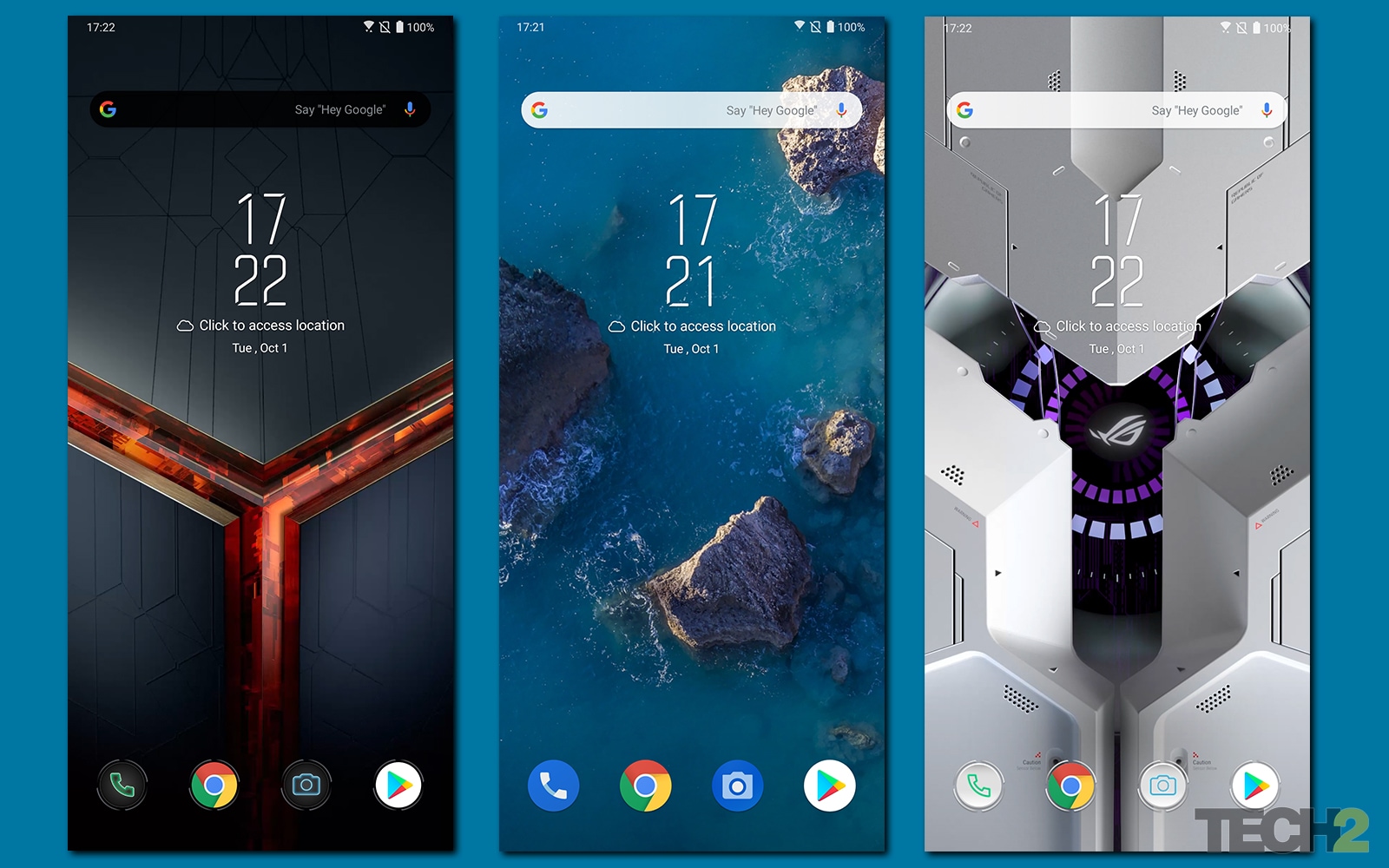 Three Android themes on the Asus ROG Phone II.[/caption] With the monster 6,000 mAh battery, fast charging had to be there and the phone supports up to 30 W. In the box, you’ll get an 18 W charger that should be able to charge the phone from zero to 100 percent in two hours. On charging, the phone reached 30 percent in 30 minutes and took 53 minutes to reach 50 percent of charge. Asus has said that it chose a higher battery capacity over faster charging to minimise on battery degradation. What the company means to say is that the battery will last you longer than other phones that support those blazing fast charging speeds. You can achieve a longer battery life if you dial down the refresh rate to 60 Hz. However, using this phone on a lower refresh rate would be a travesty. High battery capacity does take away the anxiety of having to charge your phone at the end of the day. It would be a horror in the morning if you realise that you’d forgotten to turn on the charger’s switch. I didn’t have such a problem with this phone. Even with 25 percent of charge at the end of the day, I was able to use the phone until I reached office the next day early in the morning. Usage included some light web browsing and listening to music while commuting and I was still left with 10 percent until I plugged it in. And this was without turning on the battery saver mode. Asus says that it has implemented something called “ROG Kernel Optimisation” to ensure that the battery is efficiently used right down to the kernel-level. [caption id=“attachment_7437181” align=“alignnone” width=“1600”]
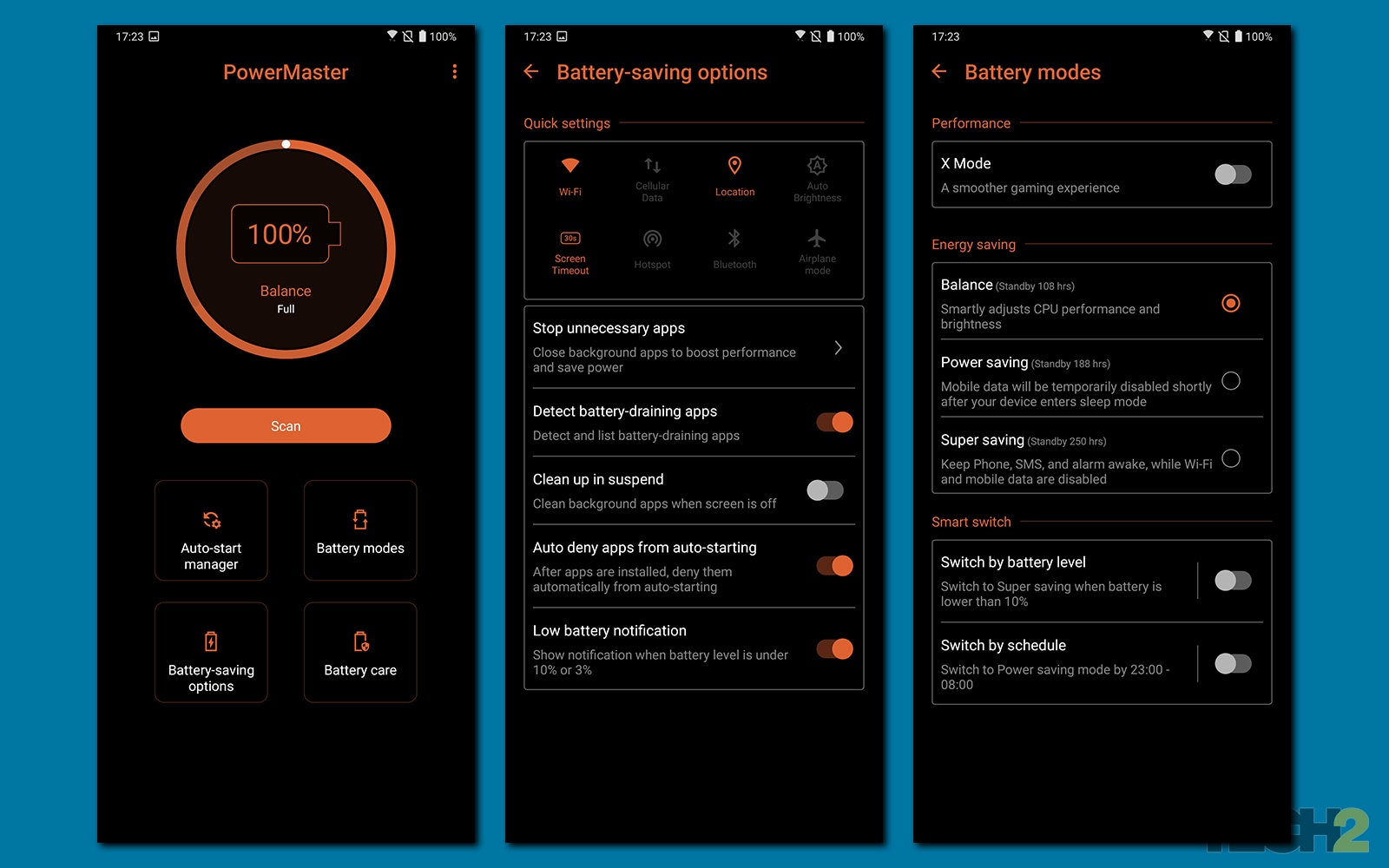 Battery saving and optimisation options on the Asus ROG Phone II.[/caption] While using smartphones, I prefer a prominent haptic feedback system that feels seamless while navigating through the UI. This phone has two vibration motors that are meant to work individually to offer better immersion in supported games. But apart from games, the vibration motors are subtle but yet distinguishable. It is satisfying to type and navigate across the system. The in-display fingerprint scanner works most of the time. It does struggle sometimes but you will hardly notice. But do note, you have to ensure that your finger has sufficient contact over the scanner, otherwise, it fails to detect a finger. Remember I told you that you could have a wonderful multimedia experience on the phone? Well, apart from the display, it has two extremely loud speakers on the front. The stereo speakers can get really loud indoors and when you’re outdoors, you can turn on the Outdoor mode to boost the audio output. Whether it was movies, TV shows, music or games, I was satisfied with the quality and loudness of the speakers.
How much of a “gaming smartphone” is it?
Let’s make one thing clear. You CAN play games on any smartphone that runs a powerful top-end chipset. However, if an OEM decides to build a smartphone and give it a “gaming” moniker, it has to offer something more than just overclocking functionality or a special cooling system. Does the ROG Phone II offer those? Absolutely. And I’ll be talking about some of the interesting aspects that were actually helpful. To give you complete control over gaming performance, Asus has a dedicated app called Armoury Crate. It lists down all the installed games on the phone, like a game launcher, where the performance parameters can be individually customised in the Games Lobby tab. This is where it offers something that no other manufacturer does. If you tap on ‘Game Profiles’, you get access to tinker around with settings including touch, display, performance, audio, and network. The Console tab displays all the hardware monitoring parameters including temperature and frequency of the CPU and GPU, memory, battery and storage status. [caption id=“attachment_7437161” align=“alignnone” width=“1280”]
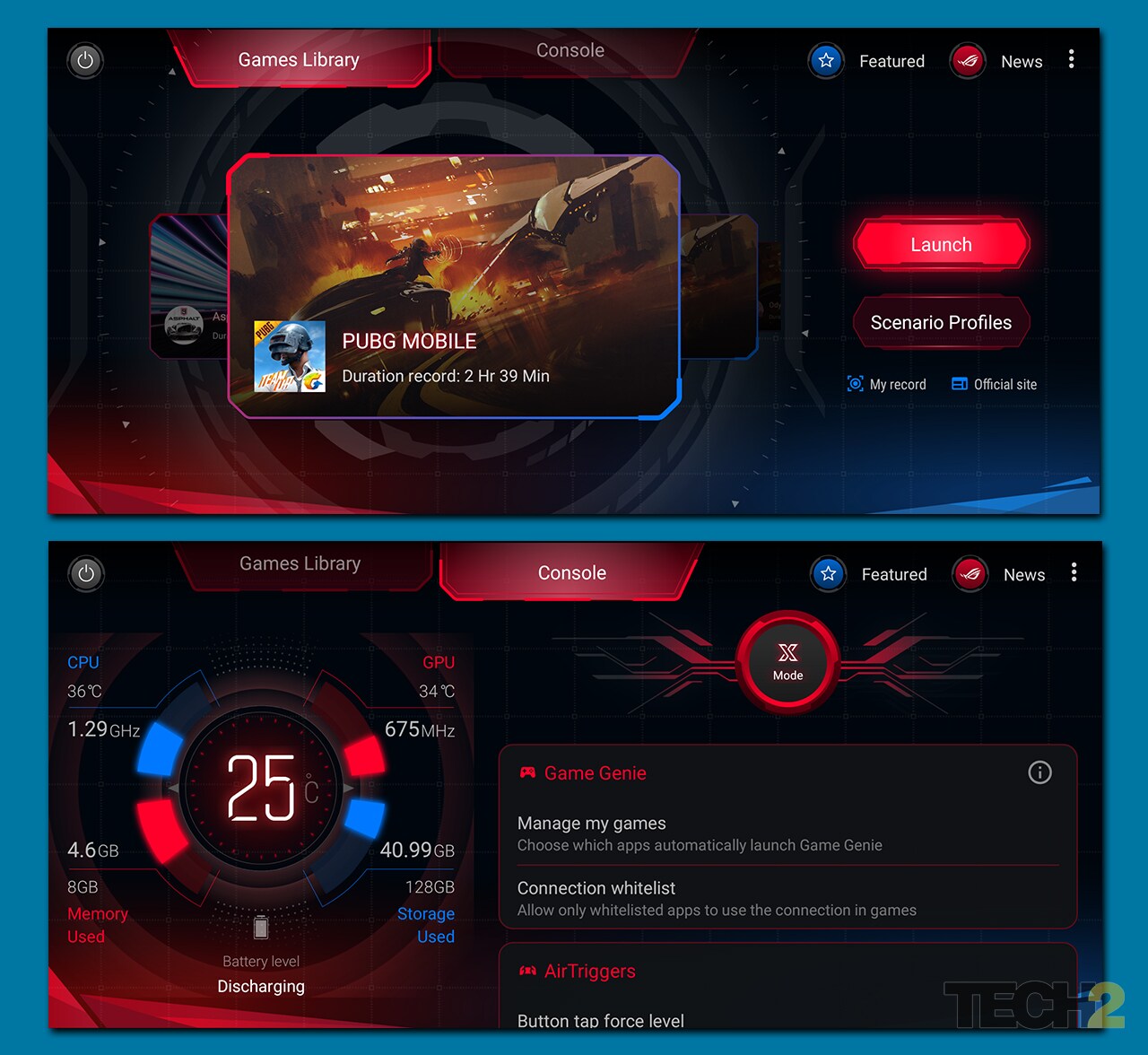 Armoury Crate customisations on the Asus ROG Phone II.[/caption] If you go further to the performance section via Games Profiles, you will come across X mode. In this mode, the minimum CPU frequency is increased and it optimises memory. It can be enabled from Armoury Crate or the quicker way would be from the quick settings menu. Once turned on, the RGB logo on the rear starts glowing. This mode has the Gaming Tuning mode that allows you to adjust the CPU clock speeds, control the temperature and many more functions. [caption id=“attachment_7440561” align=“alignnone” width=“1280”] The RGB ROG logo at the back can be customised. Image: Tech2/Abhijit Dey[/caption] It doesn’t stop there. If you switch to Hardcore Tuning in the same menu, you can go down to changing the minimum and maximum frequencies of the CPU cores, change the power levels of the GPU, adjust memory settings and more. Such a level of customisation is only available in custom ROMs and enabled only with rooted systems. Asus is providing these features to all its users. Although not everyone is going to touch this section, it would have been great if there were clearer instructions to what each option accomplished. [caption id=“attachment_7437171” align=“alignnone” width=“1280”]
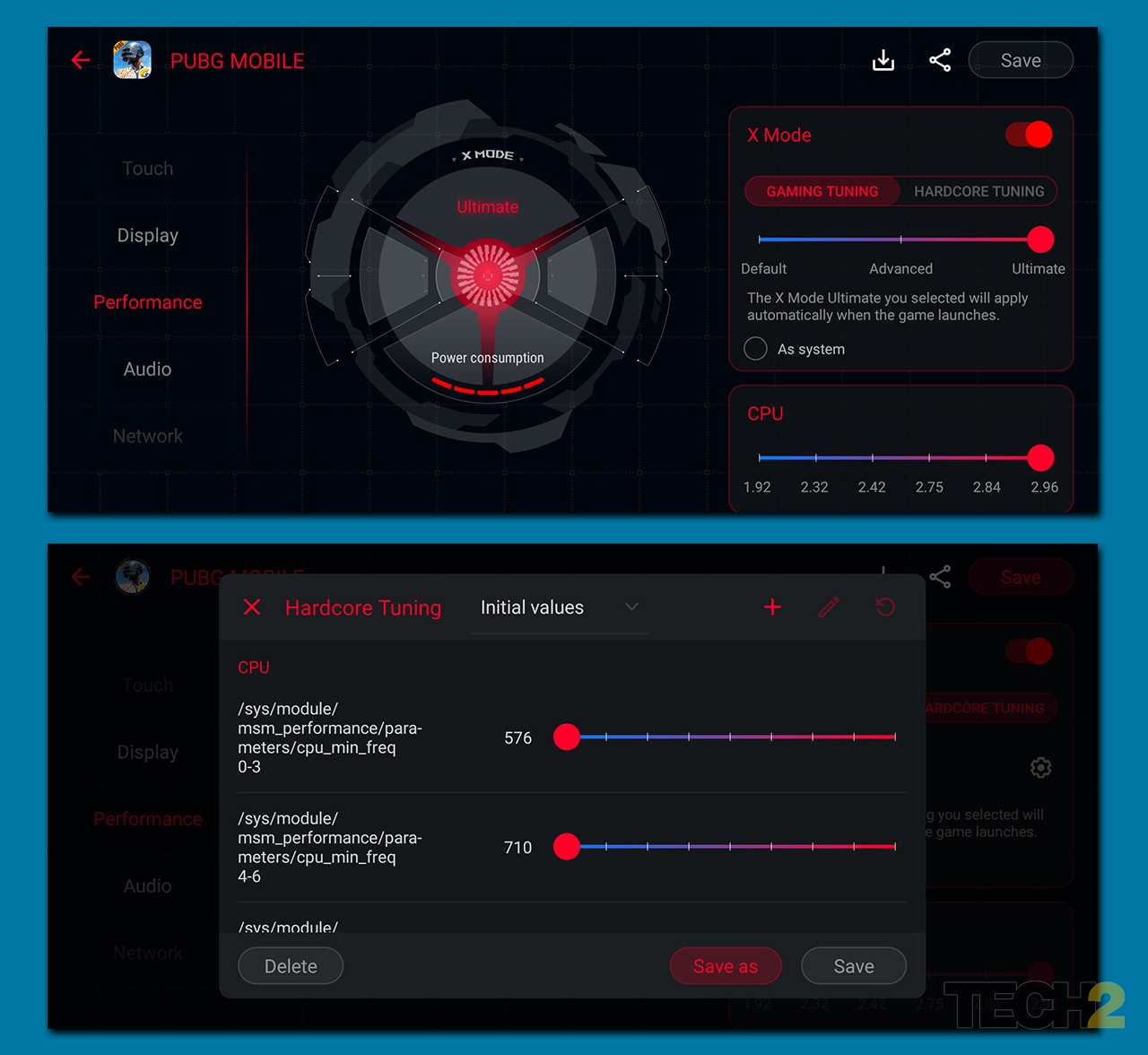 Armoury Crate app on the Asus ROG Phone II.[/caption] Another handy tool is Game Genie. Whenever you launch a game, a pop-up called Solar Game Genie appears that tells you whether X mode is turned on, calls and notifications are blocked or if the clean memory function is running. Once the game has launched, you can access the Game Genie menu by swiping from the left. It allows you to enable or disable many functions including calls, notifications, brightness level, air triggers and many more options. You can also start screen recording from this menu or go live to your YouTube or Twitch account. The most useful function was ‘Real-time info’ that enables an on-screen display of CPU and GPU usage, temperature, battery level and frame rates. This is where we got to know the level of optimisation in games where some of them would be GPU-intensive while some would just not take full advantage of the resources. It also showed us the frame rates on several games to determine whether they were actually going past the 60 fps mark. [caption id=“attachment_7437291” align=“alignnone” width=“1500”]
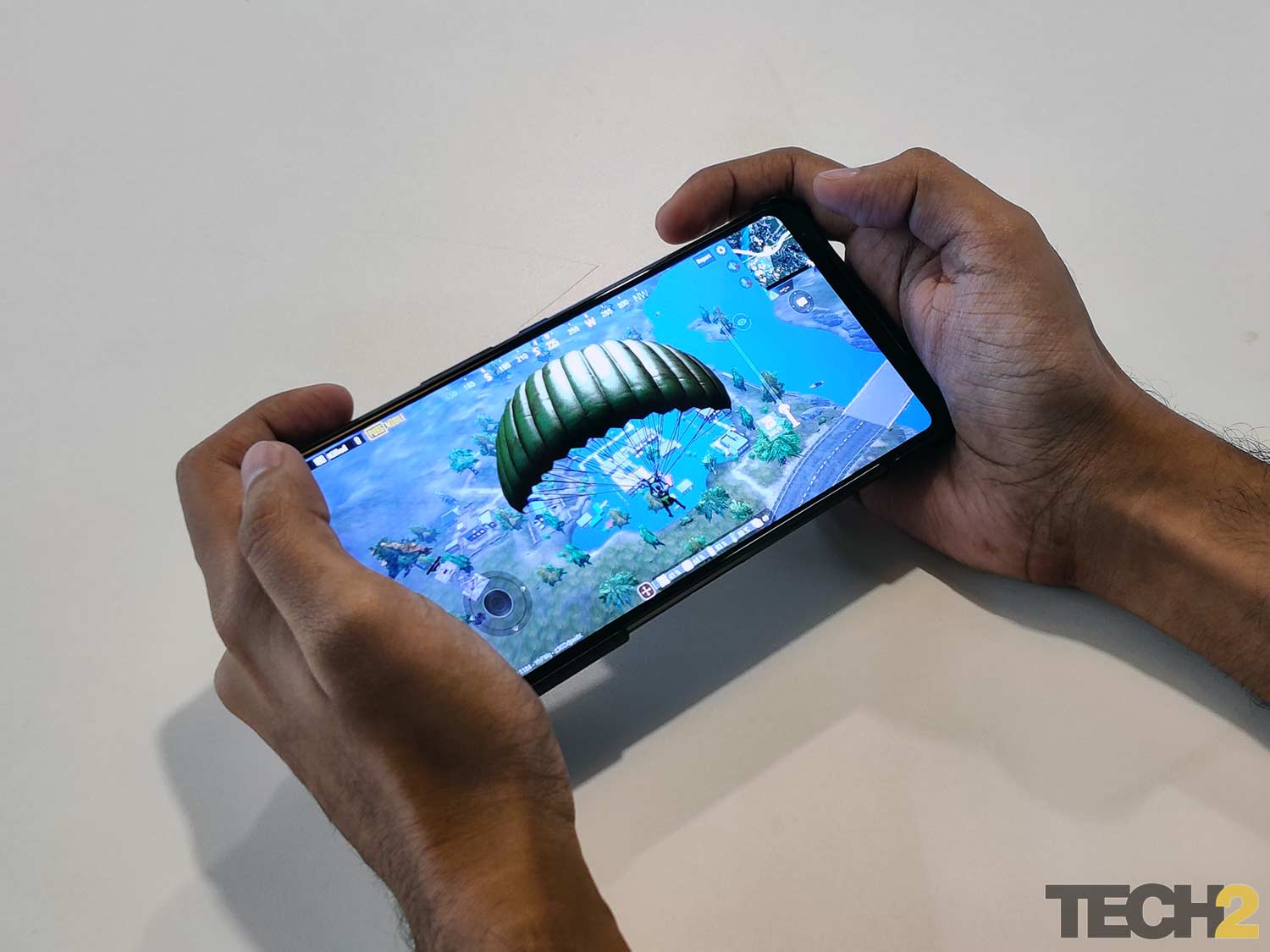 Air Triggers on the Asus ROG Phone II are incredibly useful. Image: tech2/Sheldon Pinto.[/caption] Air triggers can either provide a massive advantage in mobile games or you would not even use them. The right-side of the device has two areas where ultrasonic and pressure-sensitive air triggers have been added just like the original ROG Phone. These two triggers can emulate touch at specific locations on the screen set by the user. Before using air triggers, I had no idea that I would become so dependent on them in FPS mobile games. They ease off some control from the touchscreen to leave more room to use the other buttons. You can enable them from the Game Genie menu after launching a game. For example, if you’re running PUBG Mobile or Call of Duty: Mobile, two circles will appear – red and blue – that have to be dragged and placed over the buttons you want to emulate. Once you’ve customised according to your need, you can start playing the game. The triggers will only activate when the game runs and it will remember the button assignment every time you launch the game. The proprietary port on the side that also includes a USB-C port (the black one) is highly useful if you consider it from a gaming perspective. It’s used to connect the gaming accessories that are sold separately. Although I wouldn’t recommend it, if you’re low on battery but still want to play games, having the charger connected at the centre allows you to comfortably hold the device. Ergonomics go for a toss if you have to connect the charger to the bottom and then play while holding the device horizontally. This was a good design choice that was present on the original ROG Phone as well. However, if you use wired earphones connected to the 3.5 mm jack, you will face the same comfort problem. Speaking of design choice, I’m glad that Asus didn’t go the route of a bezel-less display. Those bezels on the top and bottom actually help you to hold the phone while playing without worrying about accidental touches. Playing games on the ROG Phone II was a wonderful experience. Thanks to the powerful Snapdragon 855+, the phone was able to churn out the best possible performance from the games I tried including Asphalt 9: Legends, Mortal Kombat, Shadowgun Legends, Call of Duty: Mobile, etc. The phone did get really hot at times where I couldn’t hold the top region for too long. But if you’re playing with the included case attached to the phone, it manages to cover the surface where the phone would get incredibly hot. This was after an hour of continuous playing. Even though the surface temperature or skin temperature was hot, there was no performance drop in games and I observed that the package temperature never crossed 46 degrees. [caption id=“attachment_7437191” align=“alignnone” width=“1280”]
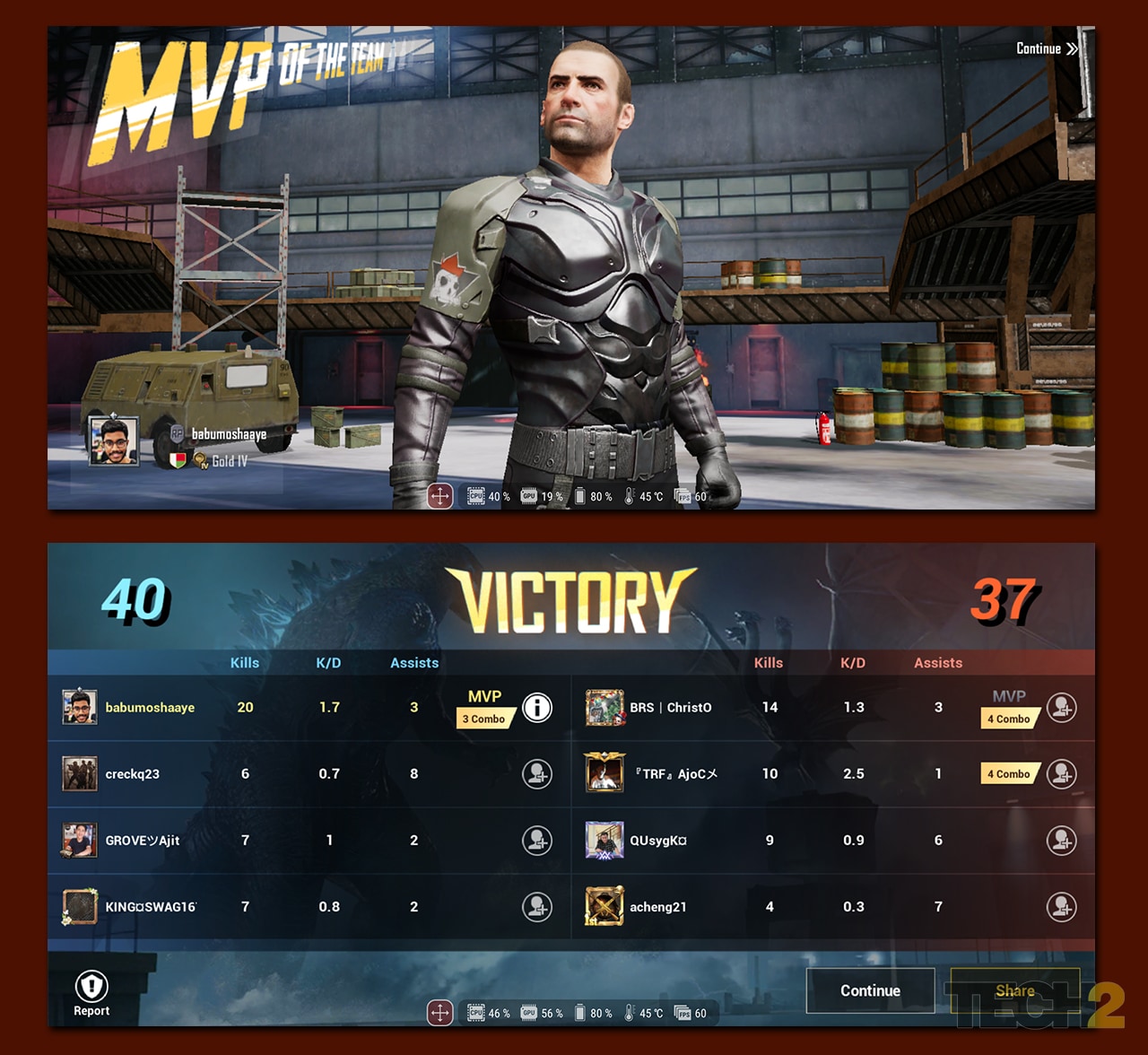 Gaming advantage with Air Triggers on the Asus ROG Phone II.[/caption] An entire range of gaming accessories is available for the ROG Phone II. I only got to spend an hour with some of them and they are actually useful in certain games. Some of these accessories could be combined together to form a mean-looking gaming console. We don’t know yet when and where are these accessories going to be available. I’ll update this review when we do. Meanwhile, here are the accessories that can be bought separately:
- AeroActive Cooler II
- Aero Case
- TwinView Dock II
- ROG Kunai Gamepad
- Mobile Desktop Dock
- Pro Dock
- WiGig Display Dock Plus
- ROG Lighting Armor Case
Surprisingly good camera performance
As already mentioned, gaming smartphones didn’t do that well in the camera department. That changes now. I was surprised at how well the camera performed and I believe that the ROG Phone II could be packing the best smartphone camera in the sub-40k price segment. I say “could” because it falls behind the Google Pixel 3a XL in details but quite the opposite in video performance. [caption id=“attachment_7440581” align=“alignnone” width=“1280”] The dual-camera setup on the ROG Phone II performed well above my expectations. Image: Tech2/Abhijit Dey[/caption] The phone uses the popular 48 MP Sony IMX586 lens as the primary camera along with a 13 MP 125-degree ultra-wide lens. I took out the phone to many locations, indoors and outdoors, with different lighting conditions. When there’s a sufficient amount of light, the camera takes brilliant pictures with great details. Of course, it does better in sunlight, it does manage to take good pictures with artificial lighting as well, although they appear softer. You can click on the camera crops/samples below to check out the high resolution or full resolution images. [caption id=“attachment_7439171” align=“alignnone” width=“640”]
 Daylight and moving shot on the Asus ROG Phone II. Image: tech2/Abhijit Dey.[/caption] [caption id=“attachment_7439201” align=“alignnone” width=“640”]
 Portrait mode on the Asus ROG Phone II. Image: tech2/Sheldon Pinto.[/caption] Portrait mode is also available and again, it works well in good lighting conditions. Edge detection isn’t as good as the Pixel 3a XL but almost the same as the 7T. [caption id=“attachment_7439221” align=“alignnone” width=“640”]
 Standard daylight shot on the Asus ROG Phone II. Image: tech2/Abhijit Dey.[/caption] [caption id=“attachment_7439231” align=“alignnone” width=“640”]
 Standard daylight shot on the Asus ROG Phone II with the ultra-wide camera. Image: tech2/Abhijit Dey.[/caption] Things aren’t that great when the sensor doesn’t get enough light. In dark areas where there aren’t many light sources, details are drastically lost. However, this is the case with many smartphone cameras out there. You will still get good images indoors such as shopping malls and restaurants in the night, but again textures are softer. There’s a night mode in the camera app that does bring down the highlights and sharpens some of the areas but it messes up the colours. It’s your personal preference whether you like the processed night shots or in the normal mode. [caption id=“attachment_7439251” align=“alignnone” width=“640”]
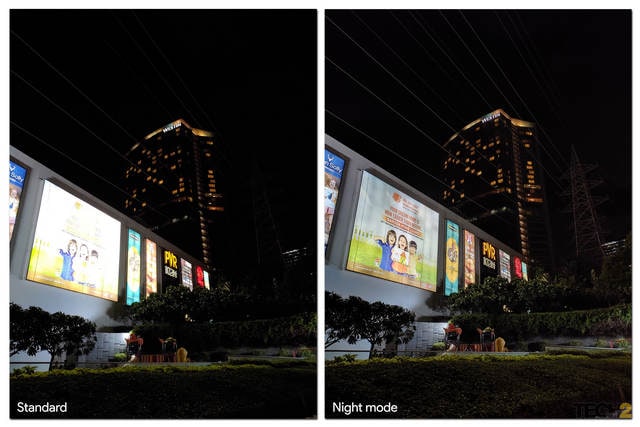 Standard and night mode on the Asus ROG Phone II. Image: tech2/Abhijit Dey.[/caption] [caption id=“attachment_7439241” align=“alignnone” width=“640”]
 Standard and Night mode shots on the Asus ROG Phone II. Image: tech2/Abhijit Dey.[/caption] [caption id=“attachment_7439271” align=“alignnone” width=“640”]
 Standard shot in low-light on the Asus ROG Phone II. Image: tech2/Abhijit Dey.[/caption] [caption id=“attachment_7439281” align=“alignnone” width=“640”]
 Standard shot with the Asus ROG Phone II. Image: tech2/Abhijit Dey.[/caption] The front 24 MP camera shoots detailed photos and sometimes, the photos came out close to the level of detail with the Pixel 3a XL. Colours weren’t always the best with the OnePlus 7T since the white balance seemed to be changing quite often. However, at the time of writing this review, the OnePlus 7T had a future OTA update on its way and we will update the review if we notice improvements. [caption id=“attachment_7439291” align=“alignnone” width=“640”]
 Standard shot on the Asus ROG Phone II. Image: tech2/Abhijit Dey.[/caption] [caption id=“attachment_7439311” align=“alignnone” width=“640”]
 Portrait mode on the front camera of the Asus ROG Phone II. Image: tech2/Abhijit Dey.[/caption] When it was time to test the video recording capability of the ROG Phone II, I was highly curious since the images turned out to be so good. And I was indeed surprised yet again. The stability on the phone is better than the OnePlus 7T, whether I was recording a video while walking or from inside a moving car. However, the colours are saturated in the video, so skin tones and other details don’t appear natural. There was no beating the Pixel 3a XL in details and the portrait mode, the ROG Phone II took better photos than the OnePlus 7T in most of the conditions, except the night mode at certain times. However, the phone easily beats both the phones in video recording quality and stability. What started off on a sceptical note in the camera testing, the ROG Phone II has managed to pleasantly surprise me with how well the camera has been implemented.
Are there any deal-breakers here?
There are a few. But most of them are highly subjective. It could or could not be a problem for you. The moment I held the device for the first time, my biggest concern was the display size. I have medium-sized hands and it was uncomfortable to operate the device with one hand. To pull down the notification menu, I had to either conduct risky gymnastics with my hand or whip out the other hand to swipe down the notifications. But hey, if you have long fingers, you wouldn’t be complaining. Keeping the phone in your pocket and sitting down, may or may not be the most comfortable. The ROG Phone II is a “chonk”, something that fat cats or animals are called on the internet. With a display size of 6.59 inches and weighing 240 g (that’s almost a quarter of a kilo), it’s even heavier than the OnePlus 7 Pro. Combined with the display size, it could jutt out of your pockets. We wouldn’t recommend playing games on this phone while you’re holding it over your face. If it falls, you could actually hurt yourself. I noticed that when you aren’t using the device but only holding it for longer, you gradually feel the weight. Compare this to the OnePlus 7T, and suddenly the phone felt compact and comfortable to hold or store it in your pocket. [caption id=“attachment_7440541” align=“alignnone” width=“1024”] The ROG Phone II weighs in at 240 grams but does not come with an IP rating. Image: Abhijit Dey[/caption] There’s no IP rating or splash-resistance advertised on the device. The design could be a priority for some people and while smartphone designs are lately taking the minimalist approach, this phone is far off. Although its design doesn’t scream “gamer” as it did with the original ROG Phone, it still has a slightly toned-down version of those accents and geometric design on the rear. However, this will probably concern someone who’s looking for a mainstream smartphone that doesn’t sport such designs. The ROG Phone II comes with Android 9 Pie out of the box and there’s no official word out yet when the Android 10 update is going to arrive. Android 9 Pie arrived almost a year after the original ROG Phone’s release if that’s the case again with this phone, it will be a big bummer. On the other hand, OnePlus has been incredible with frequent bug fixing updates and quick Android version updates. If running the latest version of Android and getting frequent security and bug fixes are important to you (which should be), think again if you’re opting for this phone. Despite these arguments, if I’m getting that brilliant display, powerful performance, and extended battery life, I’d be ready to change my personal preferences that are dependent on my physical dimensions. You have to decide which aspect is important to you and whether you’re open to compromise on comfort.
The aftermath of using the ROG Phone II
I remember trying out Campfire Audio’s insanely good Andromeda in-ear monitors or earphones for a couple of days. For the next several months, every earphone I picked up, felt underwhelming and they just didn’t sound right. After using the ROG Phone II, I have the same feeling about smartphone displays. It’s difficult to use phones with lower refresh rates now. I’ve been spoilt with the 120 Hz refresh rate. Just like how it feels to type on membrane keyboards after using a mechanical keyboard. Although, 90 Hz displays, like that on the OnePlus 7T, do lower the noticeable margin 60 Hz looks jarring now. Am I exaggerating? Maybe. But you have to use it for yourself to know the difference. [caption id=“attachment_7437301” align=“alignnone” width=“1500”] 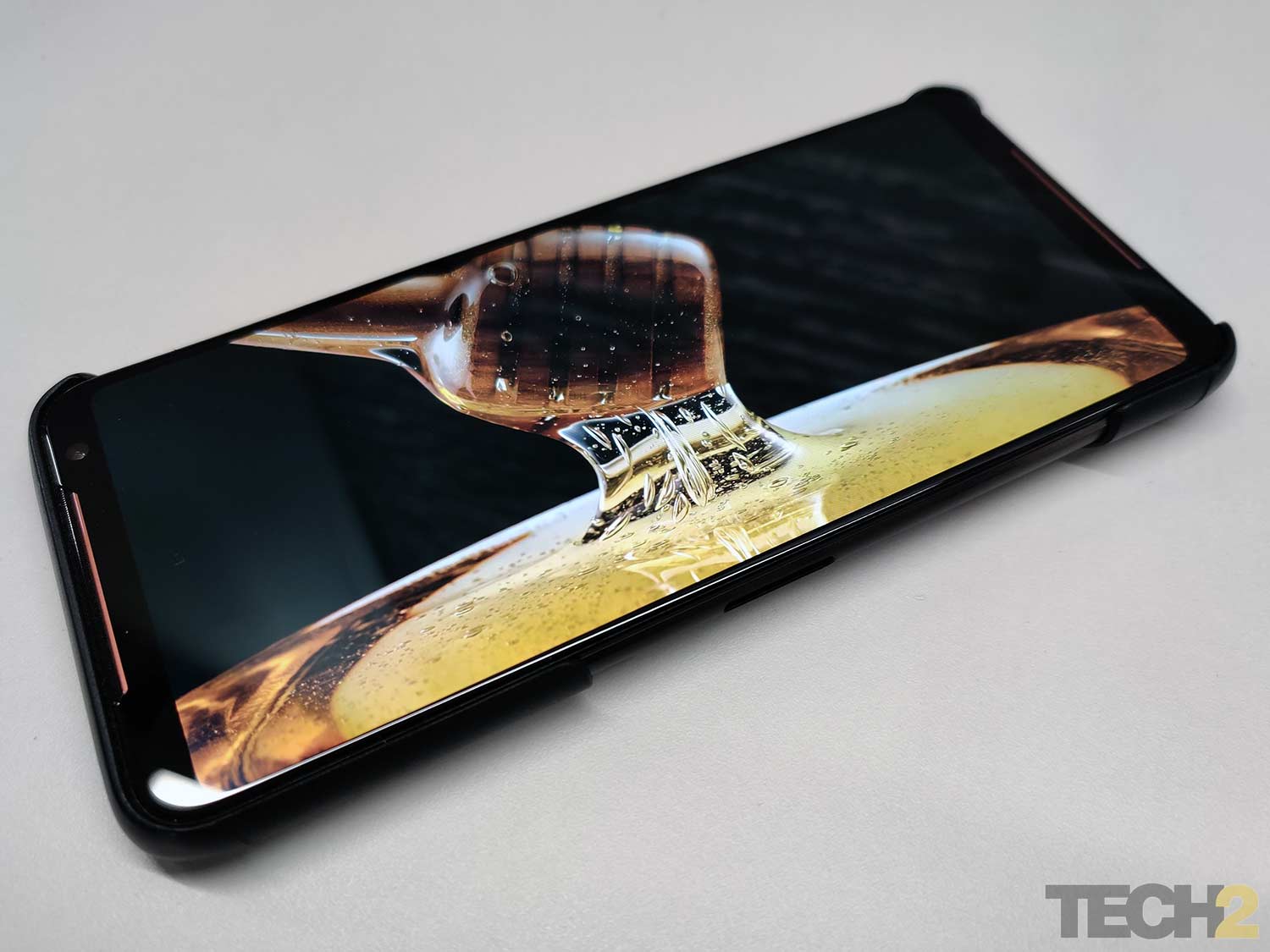 The display on the Asus ROG Phone II is gorgeous. Image: tech2/Abhijit Dey.[/caption] I absolutely suck in FPS mobile games. You will hardly find me among the top fraggers because I’m simply not comfortable playing them on a touch display. After using the Air Triggers on this phone, I was suddenly able to get a high number of kills in PUBG Mobile. They definitely served me well and without them, I’m back to scrambling at the bottom of the leaderboard and being defeated in embarrassing ways. Then there’s the battery life. I know there are smartphones out there already with massive battery capacity, but they aren’t capable of delivering the same level of performance. Essentially, I could play intensive games on this phone for a couple of hours every day and I could go on with charging the device once in two days. Without any gaming, you could potentially push the device to three days of usage on a full charge.
The bottom line: Buy it
The ROG Phone II is the ultimate gamer’s dream for a smartphone. While it shoots past many premium flagships in several aspects, it’s held behind with its camera inventory to sit among the flagships. Not that I’m complaining since it does best what it sets out to do, perform exceptionally in gaming. Also, it’s surprisingly good in taking photos and videos in this price segment. [caption id=“attachment_7437271” align=“alignnone” width=“1500”] 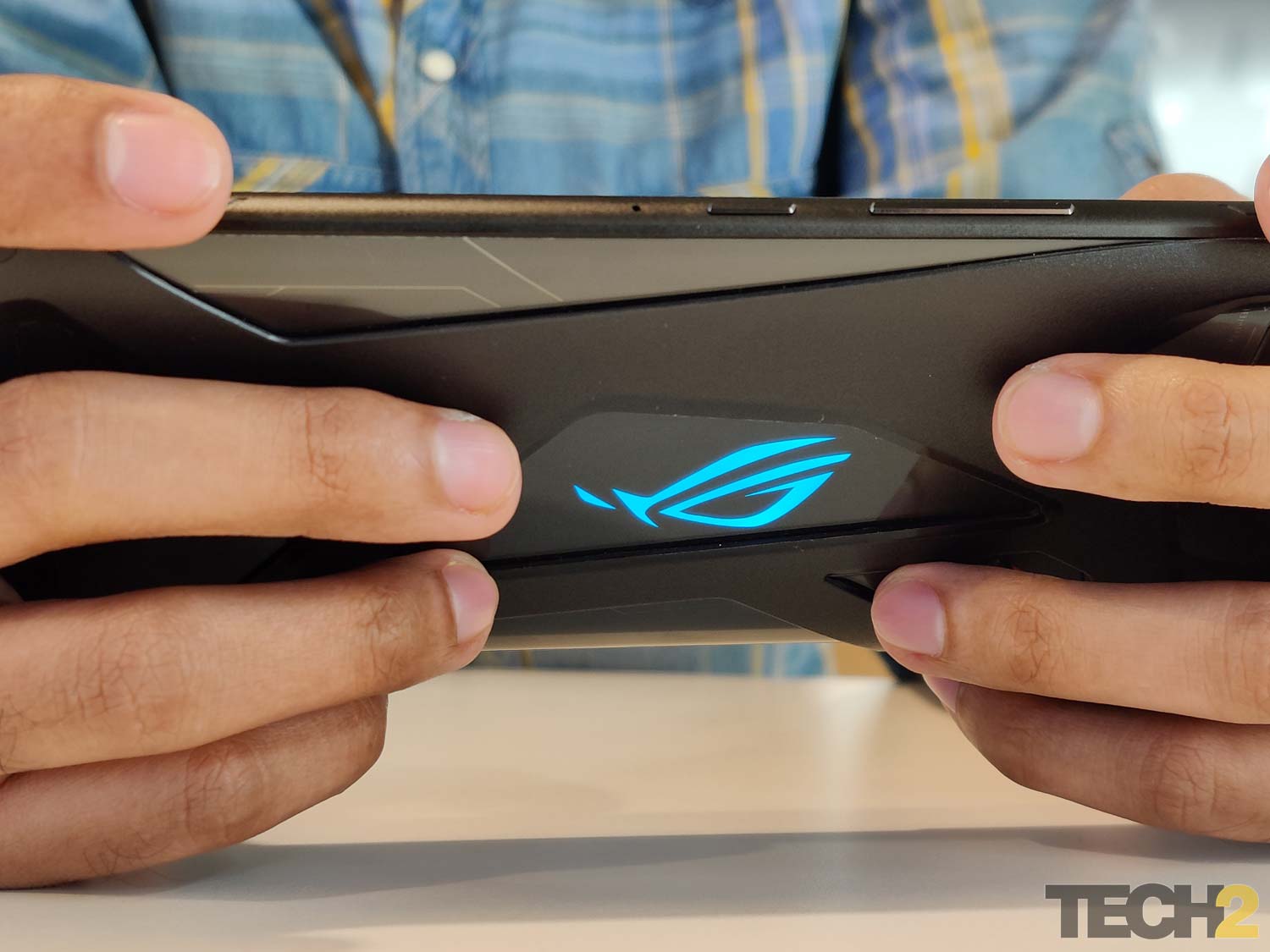 If you’re looking for a gaming smartphone, the Asus ROG Phone II could be your best choice. Image: tech2/Abhijit Dey.[/caption] No other smartphone in the market currently offers a 120 Hz AMOLED display, the Snapdragon 855+ chipset, and a 6,000 mAh battery, all in a single package at an incredible starting price of Rs 37,999. Everyone was expecting a premium price since the first ROG Phone was launched at Rs 70k but Asus shocked everyone at the event when it revealed the Indian pricing. While the specifications and features sounded amazing, the price changed everything. Not many would have batted an eye if it was going to be priced in the same price segment as the previous one. After putting the phone through everything it’s capable of for a week, I wouldn’t hesitate to recommend it to someone looking for a new gaming smartphone. Heck, this phone is fully capable of being your mainstream smartphone. I’ve already mentioned the factors or deal-breakers that you should consider before buying the device. If you can’t see yourself overcoming those, despite knowing what you get with the ROG Phone II, look no further than the OnePlus 7T.


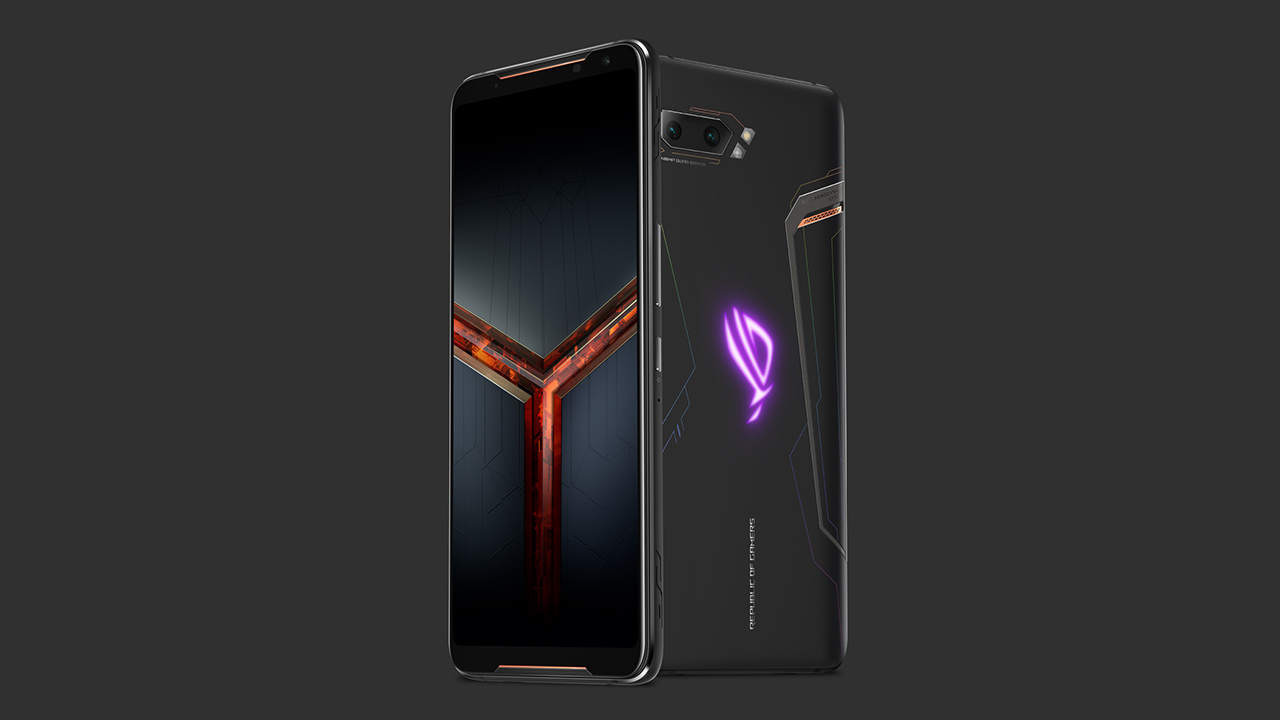)
)
)
)
)
)
)
)
)



